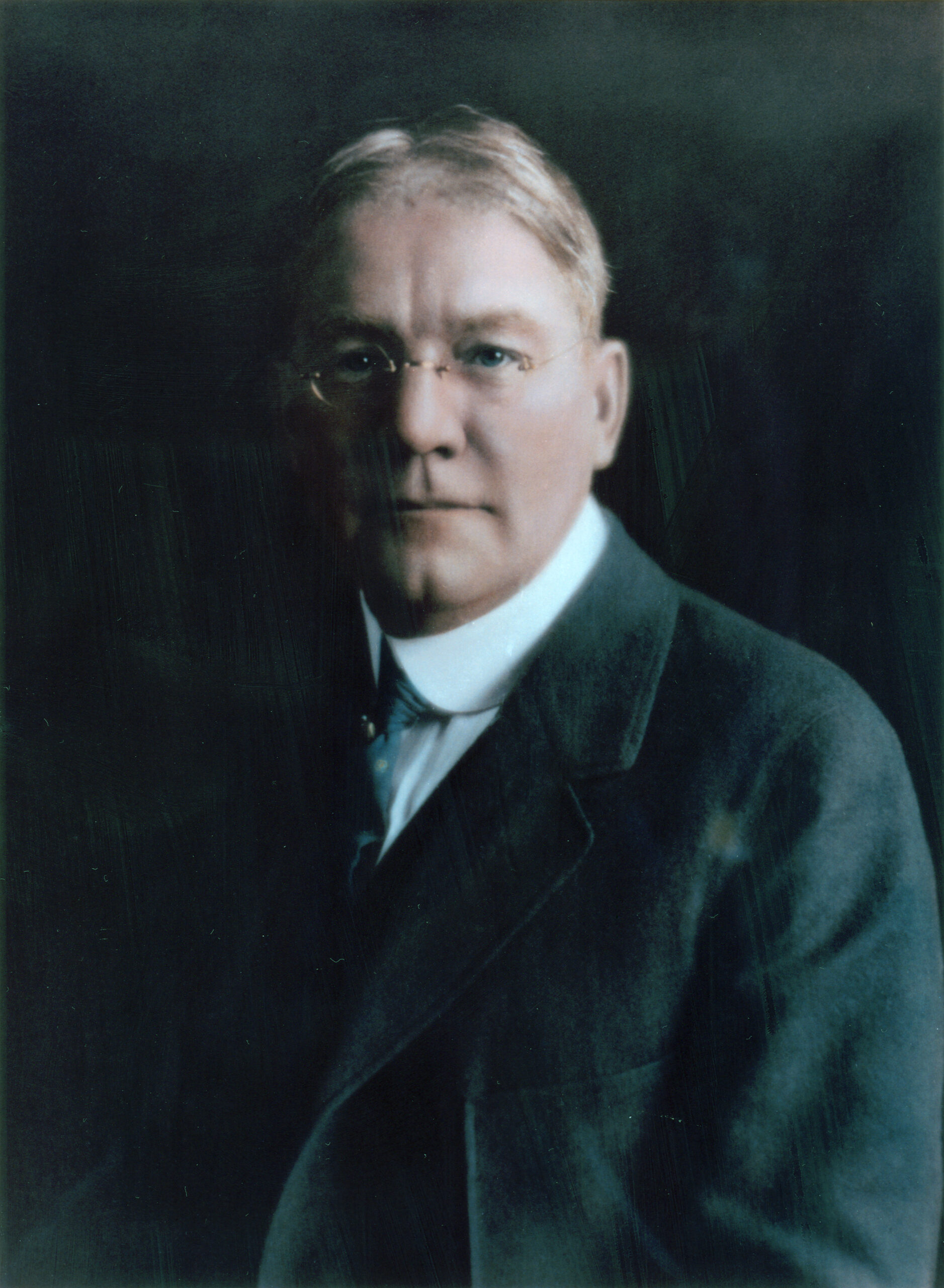Joseph Colt Bloodgood

Joseph Colt Bloodgood
- Date:
- unknown
- Medium:
- Photograph
- Dimensions:
- 30 x 23.5 in.
Joseph Colt Bloodgood
1867-1935
Bloodgood, one of William Halsted’s first surgical residents, was born in Milwaukee, Wisconsin. He received his B.S. from the University of Wisconsin in 1888, and his M.D. in 1891 from the University of Pennsylvania. After obtaining his medical degree he served for a year on the staff of the Children’s Hospital of Philadelphia.
William Osler, who first knew Bloodgood as a medical student at the University of Pennsylvania, may have influenced his decision to come to Johns Hopkins. In 1892, Bloodgood accepted the position as assistant resident surgeon. Shortly thereafter William Halsted sent him to Europe for six months to tour major scientific laboratories and surgical clinics. There he had the opportunity to meet eminent pathologists Friedrich Daniel von Recklinghausen and Theodor Billroth. In 1893, he returned to Johns Hopkins to complete his surgical residency. He served as resident surgeon under Halsted, working closely with him in problems of surgical technique and the early use of rubber gloves. Demonstrating that the use of rubber gloves drastically reduced the infection rate in 450 hernia surgeries, Bloodgood became a major advocate for their use.
In 1895, Halsted ordered that Bloodgood establish the department of surgical pathology which he directed for the remainder of his career. While maintaining his position at Johns Hopkins, Bloodgood joined the staff of St. Agnes Hospital in 1906 where he became chief of surgery. There he introduced the surgical residency program that was based upon the model established by Halsted. His research was grounded in the collection of massive amounts of clinical and pathological data. He focused extensively on cancer, particularly malignant tumors of the bone, and use of radiation in cancer treatment. He later turned his attention to cancer prevention and became a national leader in the movement to educate the public about cancer prevention, treatment, and research.
At the time of Bloodgood’s death, he was a clinical professor of surgery and director of surgical pathology at Johns Hopkins; and chief of surgery and director of the cancer research fund at St. Agnes Hospital.
"*" indicates required fields
